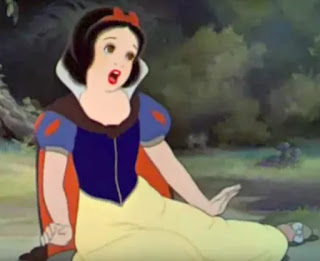On this day, in 1987,
Monorail Purple began regular operations as the first of the new Mark V trains
on the Disneyland Monorail System. While I’m confident that anyone who’s
ever been to either of Disney’s American theme park complexes will know what a
monorail is, the rest of that statement may not be as easy to decipher. Allow
me to elucidate. But first, some backstory.
Walt Disney easily became super geeked about new technology.
From sound in movies to color on television to innovations in city planning, he
loved exploring the latest, greatest ideas and gadgets. So, when he heard about
monorails, he firmly believed them to be the transportation design of the
future. That, of course, meant he needed to have one in his theme park. In
1958, he began planning to build one in Disneyland that would open along with
the reimagined Tomorrowland. Using designs made by the company who came up with
monorails, ALWEG (a German company founded by a Swedish industrialist), Walt
commissioned the Standard Carriage Works of East Los Angeles to build it. The
SCW ended up taking longer than he wanted though, so he moved construction to
the studios in Burbank late in 1958. His Imagineers came through, getting the
cars, chassis, suspension and motors built in time for the re-dedication of
Tomorrowland.
On June 14, 1959, Mark I Monorails Red and Blue went into
service as not just America’s first monorail, but the first in the entire
Western Hemisphere. Now those colors, red and blue, designate specific trains.
It’s like the letters and numbers on a plane’s tail but a whole lot easier to
remember. The color of the train’s cars (or in modern times, the stripe of
color on the otherwise white monorail) instantly tells you which train you’re
boarding. The Mark I means that those trains are the first version of monorail
cars that Disney built. As we’ll see, Disneyland’s current trains are Mark VII (although
there have only been five versions of monorails at the California park, but I’m
getting ahead of myself).
 |
| Image copyright Disney |
When it debuted, Disneyland’s monorail wasn’t really a
transportation system. It was just a sightseeing attraction that took guests in
a loop around the reimagined Tomorrowland. In 1961, that changed. The track was
lengthened to 2.5 miles to end at a new boarding platform, one connected to the
Disneyland Hotel. The platform in Tomorrowland was also lengthened as the new
Mark II trains were being deployed. Mark II trains had four cars instead of the
three that Mark I trains had. A third train, Monorail Yellow was added at this
point, too.
In 1968, both station platforms had to be lengthened again
to get ready for the Mark III trains, which, you guessed it, would add a fifth
car to the monorail’s length. Another train was introduced at that point as
well, Monorail Green. Interestingly, at this time guests could ride the
monorail from Hotel Station without purchasing admission to the park. For a
separate ticket, they could ride in the driver’s compartment in the nose or
tail section, view the park from the comfort the monorail and return to the
hotel. For those who like to keep track of that sort of thing, yes, the
monorail was an E ticket ride.
 |
| Image copyright Disney |
By the Eighties, the Mark III trains were getting pretty old
and were beginning to look like it too. Plans were made to strip each train
down to its chassis, one at a time, and rebuild it as a new Mark V. But hold
on. What happened to the Mark IV trains? When Walt Disney World opened in 1971,
it of course needed its own monorail system. Not only is Florida’s layout
almost exponentially longer than California’s but Florida got snazzy new
streamlined monorails as well, known as the Mark IV. Disneyland’s Mark V trains
were modeled after the Disney World look, with minor modifications and upgrades
of course. The new look also meant that the color schemes got a shake up.
Monorail Green became Monorail Purple and Yellow became Orange; Monorail Blue
was lightened up a few shades but the original, Monorail Red, got to stay the
same. In 2008, the latest version of the monorail, the Mark VII, began running
as each train was again individually updated (why yes, the latest trains in
Florida are the Mark VI version, thanks for asking). Except for poor Monorail
Purple, who was retired.
 |
| Image copyright Disney |
The track has undergone extensive redesigns since 1958 as
the resort has expanded and added new attractions right next to (and sometimes
right underneath) the monorail. The original Hotel Station was demolished in
1999 and the current Downtown Disney Station was built, well, in exactly the
same place. And, alas, gone are the days of being able to ride the Disneyland
Monorail without a park entrance ticket (although you still can do that in
Florida). In fact, on really busy days, you can’t even ride it round trip
without disembarking in the middle. But if you get a chance, I do recommend riding
it. It’s not every day that you get to be part of the longest operating of
something in the country. And even if monorails haven’t exactly caught on yet
outside of theme parks, it just means that Walt’s future still isn’t here yet.













































